Downtown Residential Projects
Downtown residential development and adaptive reuse of local historic building stock are strategic priorities for Capitalize Albany Corporation. The Corporation fueled the award winning strategic initiative in 2002 by allocating resources for building owners, developers and investors. The Downtown Residential Development Initiative brings many benefits to downtown, including finding a new vitality for obsolete office buildings, reinvesting in existing infrastructure and supporting a walkable community rich with arts, culture and entertainment offerings. Albany is a city with many rich residential neighborhoods; supporting downtown’s livability is an exciting addition.
Since strategy implementation began, more than $175 million has been invested into downtown Albany residential. While investment continues to produce 100 – 200 new apartment units each year, the Downtown Residential Initiative has yielded exciting results. To date, more than 1 million sq. ft. of obsolete commercial office space has been converted. As of 2024 nearly 1,000 units have been completed and more than 300 are currently under construction. The number of new downtown apartment units completed and the hundreds currently under construction and in the pipeline combined total more than 1,400 units. It signals an ongoing shift and momentum that’s supported by the Downtown Albany Residential Initiative and the strategic economic development plan for downtown — Impact Downtown Albany.
Capitalize Albany Corporation continues to focus tremendous resources to assist. This includes the Corporation’s Real Estate Loan Program and NY Main Street grants in order to move projects forward.
Downtown Residential Initiative
Understanding The Market
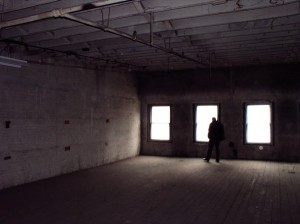
The first stage was to understand the market for residential units downtown. In 2002, the City of Albany, Capitalize Albany Corporation and the Downtown Albany Business Improvement District retained Blount Hunter Associates to complete a Downtown Marketing and Leasing Strategy to drive additional commercial retail in downtown Albany. As a part of that effort, Zimmerman Volk Associates completed a feasibility analysis of downtown housing and determined that added residents would drive additional commercial uses in downtown (An updated version of the 2011 Residential Market Analysis from Zimmerman Volk Associates is available here). The report concluded that the area and demographics would support significant additional residential units in downtown Albany. The study explained that the downtown Albany environment and amenities would be especially attractive to market segments including “twenty-something, young professionals” as well as “empty nesters” both segments looking for urban lifestyles.
It was also apparent that there is an opportunity to leverage the State’s investment in technology that has occurred at Albany Nanotech. In discussions with Albany Nanotech staff, many of the new technology employees relocating to work at the Albany Nanotech campus and now at Global Foundries, are interested in an urban living environment where they can walk to amenities such as restaurants, bars, and cultural venues. It was determined that the presence of additional downtown residents would enable the City to attract the next level of commercial and retail investment and activity.
The study also identified specific buildings in downtown Albany that were strong candidates for mixed-use redevelopment including upper floor residential conversions. Up to thirty-six buildings were identified as potential candidates for renovation or conversion projects based on availability of vacant or underutilized space and location of the property. Some of the buildings have first floor commercial tenants, however in some cases entire buildings are underutilized. The study also reported that while there is a demand for downtown residential units, there exist barriers to development.
Maximizing Potential

The second stage of the downtown residential initiative was understanding existing conditions and the potential re-use of targeted properties identified in the study. To pursue the recommendations of the Downtown Marketing and Leasing Strategy to create additional downtown residential units and to assist with relieving any barriers to development, Capitalize Albany Corporation developed a Residential Development Technical Assistance Grant program. Even though Capitalize Albany had the results of the 2002 feasibility findings that strongly indicated the market need for more units, the Corporation learned from a number of building owners that there was a perception that residential conversion of upper floors was too complicated and that the development process was too cumbersome to navigate. In an effort to combat that perception, in August of 2004 Capitalize Albany Corporation and the Community Preservation Corporation (CPC) committed $75,000 to fund the program.
The Technical Assistance program provided grant funding toward pre-development architectural/engineering services for the purpose of increasing residential development projects downtown. The architectural/engineering firm provided an Existing Conditions Report, conceptual floor plans for residential use, Building Code Review, and Preliminary construction cost estimates. The selected architectural/engineering firm had extensive experience with historic properties and expertise with interpreting the Building Code of New York State particularly Chapter K. The program reduced the financial risk for property owners to explore potential use for their space, where they may not have taken action without the funding. The program was designed to maximize the use of the building, increase the number of residential units, while increasing pedestrian activity downtown during extended hours. This program was utilized for 10 buildings, to identify actual candidates for redevelopment construction projects.
Driving Development

The third stage, is the Building Renovation Program, which is where the resource development is required, including New York Main Street Grant funding, Capitalize Albany Corporation lending, City of Albany IDA assistance and other local support as well as other appropriate sources. This stage provides funding support to the rehabilitation projects that were identified and prioritized from the Technical Assistance Grant program. The project partners of the Technical Assistance Grant program, including Community Preservation Corporation (CPC) identified that a critical component of this stage of supporting mixed-use development downtown is to assemble necessary gap financing resources for construction costs. Experience from conversion projects that have been completed in the district have indicated that property owners will need to finance the construction costs, and that any reduction in construction and operating costs will make the projects more economically sustainable for the borrowers until market rents match the cost of rehab or reconstruction. Rehabilitation of historic properties can be very expensive and complicated. However the results can be extremely unique and attractive to the urban renters desiring a walkable and vital neighborhood.

Understanding the existing debt on each property was a part of the Technical Assistance Grant program. As part of the Technical Assistance Grant program, the property owner met with a loan officer to explore financing based on the recommendations of the property evaluation report. The loan officer sought to understand existing debt and equity related to the property and estimate lending needs for the construction costs. This assessment was provided to the property owner as well as to Capitalize Albany Corporation to use in evaluating need for assistance.
In the early stages of the initiative, the Corporation recognized that a need exists to create grant programs in order to make the projects financial feasible for the property owners. Often times, the cost of redevelopment were not entirely covered by income projections, as the market was being built. Capitalize Albany applied to the NY Main Street program for two successful grant awards in 2004 and 2009. The Corporation partnered with the Downtown Albany BID to submit an application in 2011 for an additional anchor project that is still awaiting announcement.
Leveraging Resources
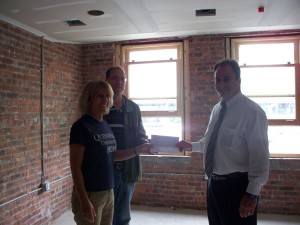
Capitalize Albany Corporation, CPC and now other traditional lenders have directed attractive and targeted financing to assist projects that were developed from the Technical Assistance Grant program. The project partners have strong collaborative relationships with a number of commercial banks that participate in a majority portion of the funding.
The City of Albany and the project partners also identified other resources that could assist project stimulus. Redevelopment projects were hesitant to take on major investments without some relief of property taxes. The project partners worked on fully instituting the 485-a Real Property Tax abatement (City and School portions) that targets existing properties that are converted into mixed use. This program offers a 12 year tax abatement on the increased value due to improvements. The City’s IDA program is also a tremendous resource for development projects, particularly where lenders require a longer or more predictable term of tax abatement. The first downtown residential, market rate project was brought to the IDA in 2006 with the Jonathan’s Pizza building redevelopment at 33 N. Pearl Street.
Building Market Momentum
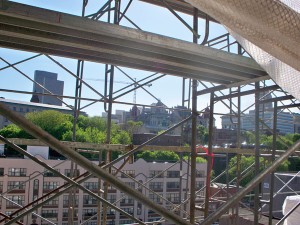
The initiative has now taken on momentum of its own, indicating that the market is taking hold. As evidence, the Technical Assistance program is no longer active. Property owners or developers are taking on the risk of analysis with their own funds, no longer requiring grants to test the feasibility. Also, as much subsidy is not required as market rents are slowly proving to be able to be achieved. Other positive signs are that traditional commercial lenders are showing more appetite for becoming lending partners in these downtown residential deals. Recent lending partners in downtown residential projects include Berkshire Bank, Capital Bank, M&T and CPC. To be clear, the market is still proving itself while economic development partners continue to play an active role in offering project assistance, marketing and promotion and beginning to offer residential mixer events as more and more people live in downtown. The 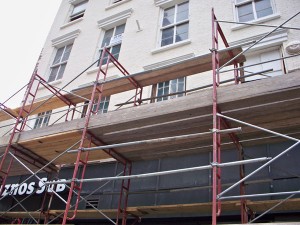 Zimmerman Volk report indicated that the market could support between 150-200 new units per year for 10 years. In total there are approaching 100 units in downtown and another 140 in the pipeline. Construction underway will convert approximately 165,000 square feet of existing, underutilized or vacant space in downtown to apartments. Additional building conversion or new construction project opportunities are actively in review stages throughout downtown. The initiative is yielding exciting results, and we look forward to seeing even more in downtown Albany!
Zimmerman Volk report indicated that the market could support between 150-200 new units per year for 10 years. In total there are approaching 100 units in downtown and another 140 in the pipeline. Construction underway will convert approximately 165,000 square feet of existing, underutilized or vacant space in downtown to apartments. Additional building conversion or new construction project opportunities are actively in review stages throughout downtown. The initiative is yielding exciting results, and we look forward to seeing even more in downtown Albany!
Financing Options
Capitalize Albany Corporation Real Estate Loan Program
The Real Estate Loan Program provides financing to qualifying real estate development projects. This will support the revitalization of property and the retention and creation of jobs for City residents. Preferred projects include strategic properties that currently are vacant or underutilized and, with rehabilitation or construction, could have a positive revitalizing effect on the community. Loans may be used with other private and public funds. Capitalize Albany Corporation will take a subordinated collateral position to a private lender, provided there is adequate collateral. The program offers long term, fixed rate financing at below market interest rates. Loans may not exceed 40% of total project cost. Proceeds may be used for construction, fixed asset financing as well rehab costs related to tenant fit ups for new business locations or residential conversion costs for rehab projects. This includes acquisition of buildings, rehab costs, furniture, fixture and equipment, construction, expansion or conversion of facilities. Borrowers are expected to provide a minimum of 10% owner equity contribution.
To apply for these loan programs contact us or fill out a pre-application and submit it to Capitalize Albany Corporation at 21 Lodge Street, Albany, NY 12207.
Community Preservation Corporation (CPC)
Community Preservation Corporation (CPC) is a private mortgage lender specializing in financing low-, moderate- and middle-income housing throughout New York and New Jersey. CPC lends for large and small apartment buildings, occupied or vacant, and for new construction developments. CPC is sponsored by 94 banks and insurance companies. There is a $100 application fee and an origination fee of 1-2% of loan amount. Loan products include, construction financing, permanent financing, Small Building Loan Program, and Preservation Financing for Cooperative Buildings.
Contact CPC for more information at (518) 463-1776 for more information.
NYSERDA $mart Loan Fund
NYSERDA $mart Loan Fund provides interest rate reductions on loans for energy-efficiency projects and renewable technologies. The program provides interest rate reductions up to 4% in cooperation with participating lenders, which include banks, credit unions, community development financial institutions, and farm credit associations. Loans can be up to: $20,000 for 1-4 family homes for a secured loan; $5,000 per unit up to $5,000,000 per borrower for multifamily buildings; and $1,000,000 per borrower for all other facilities (plus up to an additional $500,000 for “green building” improvements). The Loan Fund Program will “buy down” the lender’s interest rate by up to 400 basis points or 4%*. Interest rate reductions are available for the lesser of 10 years or the life of the loan.
Contact NYSERDA at (518) 862-1090 for more information.
Development Resources
Site Selection
Capitalize Albany Corporation staff and the City of Albany’s Economic Development team are able to assist development groups and potential investors with identifying suitable sites. Ranging from small scale 2-4 unit conversion projects to large scale 60-80 unit conversion or construction projects, staff is intimately familiar with the available building stock and available properties in downtown for residential development projects. The team is also able to connect projects with for sale information and contacts for desirable sites.
Regulatory Assistance
The City of Albany Department of Development and Planning provide land use services for projects that are going through the development review process. This includes staff to the Board of Zoning Appeals or Planning Board. Staff are able to facilitate projects through the appropriate review and permitting process in order to get from project concept to completion.
Real Property Tax Abatement Programs
485-a Residential-Commercial Urban Exemption Section 485-a of the Real Property Tax Law authorizes a declining 12-year partial exemption from real property taxation and special levies for non-residential property converted to a mix of residential and commercial uses. The application must be filed with the assessor on or before the applicable taxable status date. Once the exemption has been granted, the exemption may continue for the authorized period provided that the eligibility requirements continue to be satisfied. It is not necessary to reapply for the exemption after the initial year in order for the exemption to continue.
Contact the City of Albany Tax Assessor at (518) 434-5155 for more information.
City of Albany Historic Property Tax Abatement
This is an exemption for improvements to Historic Property in the City of Albany and applies only to City property taxes (does not apply to County or School taxes). This exemption is to provide a property tax incentive to encourage investment in and rehabilitation of historic properties. This exemption applies to any increase in value attributable to the alteration, rehabilitation or renovation of a historic property. There will be a five-year 100% abatement of the increase in assessed value resulting from the project. The abatement will be reduced by 20% in each of the next six (6) years until taxes are paid on 100% of the assessed value of the property. Some restrictions regarding conformity to local law and approval by local preservation commissions do apply.
Contact the City of Albany Tax Assessor at (518) 434-5155 for more information.
Living Downtown
 Downtown Albany offers residents, visitors and workers an urban setting for whatever interest brings them to Downtown. Many agencies work to keep downtown safe, beautiful and inviting for everyone who spends time in the district.
Workers in Downtown Albany have enjoyed the easy access of working here for years. With convenient access to major interstates and highway systems coupled with sufficient parking, working downtown has its many perks. There are countless dining options and many retail offerings making downtown a convenient place to work.
Residential options in downtown have been on the rise in recent years as the demand for urban living options have increased. A walkable, safe and urban district serves as a great offering to those living in this neighborhood.
Downtown Albany offers residents, visitors and workers an urban setting for whatever interest brings them to Downtown. Many agencies work to keep downtown safe, beautiful and inviting for everyone who spends time in the district.
Workers in Downtown Albany have enjoyed the easy access of working here for years. With convenient access to major interstates and highway systems coupled with sufficient parking, working downtown has its many perks. There are countless dining options and many retail offerings making downtown a convenient place to work.
Residential options in downtown have been on the rise in recent years as the demand for urban living options have increased. A walkable, safe and urban district serves as a great offering to those living in this neighborhood. Parks and Recreation
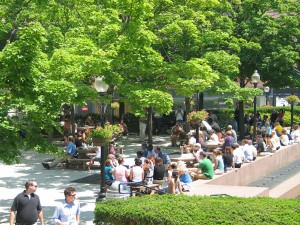
Downtown’s parks are a favorite destination for both residents and visitors alike. The Albany Riverfront Park at the Corning Preserve is a waterfront destination for recreation and a variety of entertainment. With easy access provided by the Hudson River Way Pedestrian Bridge, the park bolsters an amphitheatre with performance space, a new bulkhead, floating boat docks, and a six mile bicycle path for recreation. This park is home to numerous events each year and is a popular attraction for those looking to take a walk or bike ride on the river.
In addition to the Riverfront, downtown also has a number of true urban pocket parks. These offer settings where you can enjoy lunch, read a book, attend special events, or just relax on the weekend.
Downtown’s 50 square blocks is home to three fitness centers offering cardio, weightlifting, personal training, and class exercise opportunities.
Quality of Life

If you are one of the many people calling downtown Albany home, you will certainly be pleased with the various services and standards that add to the quality of life for this neighborhood. The City of Albany and Downtown Albany BID work diligently to maintain this district as a safe, clean and inviting place to call home. Residents may often notice the dedicated beat officer for this neighborhood, who has built a rapport with merchants, property owners, employees and visitors, further promoting the district’s friendly and safe environment.
The Downtown Albany BID’s Clean Team Ambassadors work to remove litter from sidewalks, walkways, crosswalks and curbs. During the winter, Team members keep intersections and cross walks free of snow. This seven-day-per-week program is designed to complement the efforts of the city’s Department of General Services.
Dining and Retail
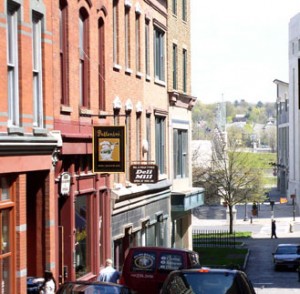
Downtown Albany has a number of restaurants to choose from all offering a variety of cuisines and atmospheres. There are over 75 restaurants, bars and eateries to choose from.
In particular downtown has attracted a number of fine dining restaurants which have been a draw for bringing numerous people into downtown. Restaurants like 677 Prime, Yono’s, and Jack’s to name a few, are true destination restaurants and draw crowds from all over the Capital Region.
In addition to these dining options, Downtown has a number of retail establishments that make it a convenient place to live. These offerings include more than a dozen banks, salons and barber shops, numerous convenience stores, specialty clothing, and retail stores. The convenience of having all of these within walking distance surely makes this area a desirable place to live.
Entertainment and Events

Downtown Albany attracts world renowned artists and sporting events to the many entertainment venues that are within the district. These include the Times Union Center, Albany Capital Center, Capital Repertory Theater, and Palace Theatre to name a few. Greats such as Diana Ross, The Rolling Stones, Bruce Springsteen, Michael Buble, Keith Urban, American Idol, NBA, WNBA and NCAA basketball, and AHL hockey have all taken center stage Downtown.
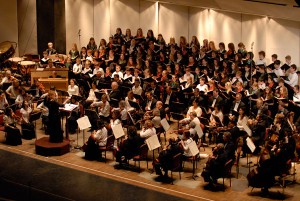
On any given night, there could be as many as 24 unique performances at a variety of venues. Grab a drink or dinner and listen to local pianists, check out the latest upcoming independent rock group, or watch established national artists take the stage at the Capital Region’s premier venues-Downtown plays host to them all. Living downtown provides quick access to all these wonderful venues and offerings.















































Social Media